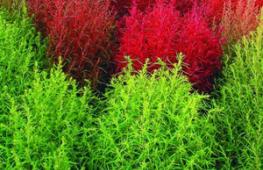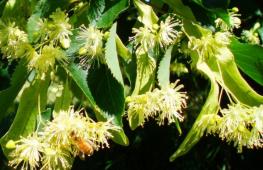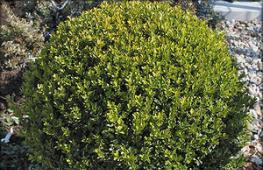Landscape design of the site. Landscape design of the Black Linden site
American linden is perfect for growing bonsai. Homeland - North America (eastern part).
The deciduous plant has a beautiful spreading crown. Branches may be slightly drooping. The bark is light brown, sometimes with a grayish tint, and covered with narrow, shallow cracks. Young shoots are smooth to the touch. They are reddish-gray in color, but gradually turn brown.
The root system is powerful. The buds are dense, oval in shape and pointed at the ends. The simple leaves, which are held on elongated petioles, have a regular arrangement. They reach 5–8 cm in length, with a serrated edge. Young foliage is pale green. A fully formed leaf is slightly shiny (upper part). Below at the base it is covered with small hairs.
In autumn, the green color of the leaves gives way to golden yellow.
In early or mid-summer, American linden blooms with small flowers. They are regular in shape, five-petaled and collected in umbrella-shaped inflorescences that emit a pleasant honey aroma.
There will not be any particular difficulties in forming a beautiful, neat bonsai from Linden of this species. The biggest difficulty is reducing the size of the branches and forming a compact spherical shape.
On a sultry hot day, it can be pleasant to relax in the shade of an old spreading linden tree - and a beautiful tree that has a lot of valuable properties and qualities. Do we often wonder what a tree like linden is?
Decorative species: dark green and begonial.

The species is widespread in the broad-leaved forests of Crimea and is a natural hybrid of Caucasian and small-leaved linden.
The height of the tree can be up to 20 meters. The crown is oval, dense. The branches are drooping.
The leaves are 12 cm, oval, dark green on the outside and dull on the inside, with tufts of brown hairs at the corners of the veins.
Flowering time is early June, duration is two weeks. Flowers have 3-7 pieces in an inflorescence.
A young tree grows slowly; as it matures, growth accelerates.
It is resistant to frost and drought, and easily tolerates shade.
Distributed in the forests of Europe, Ukraine, Moldova, and the Caucasus.  The trunk is up to 35 meters high and reaches a diameter of up to 6 meters. The crown is spreading and has the shape of a wide pyramid. Young shoots are brownish-red, pubescent, young shoots are glabrous.
The trunk is up to 35 meters high and reaches a diameter of up to 6 meters. The crown is spreading and has the shape of a wide pyramid. Young shoots are brownish-red, pubescent, young shoots are glabrous.
The oval 14-centimeter leaves are fleecy, dark green on the outside, light on the inside, with hairs at the corners of the veins.
Flowering occurs in July, the flowers are yellow or cream, from 2 to 5 pieces in an inflorescence. The fruit is nut-shaped, round, ribbed.

The tree grows quickly and loves fertile soil. Moderately resistant to frost and gas contamination.
It is distinguished by its durability: it can live up to 500 years of age, some specimens live for more than a thousand years.Decorative types of large-leaved linden: golden, grape-leaved, pyramidal, dissected.
Grows in the southern regions of the Far East.  The tree grows up to 20 meters. Often multi-stemmed, black bark, cracked.
The tree grows up to 20 meters. Often multi-stemmed, black bark, cracked.
Its crown has the shape of a wide oval. It has exceptionally large, up to 30 cm, leaves, pubescent on the underside.
It blooms in July, flowering lasts about three weeks. Flowers are 1-1.5 cm in diameter, powerful inflorescences, 8-12 flowers, drooping.

Did you know? Thanks to the drooping type of inflorescences, nectar is not washed away during rain, and bees can do their work even in rainy weather.
Densely pubescent nuts with a diameter of 1 cm ripen in August.
A very decorative tree with high frost resistance.
It grows in the Crimean-Caucasian region, in the European part of Russia, as well as in Siberia and Western Europe. Another name - heart-shaped linden - was given to the shape of the leaves.
Reaches 30 meters in height, the trunk is more than a meter in diameter, and is cylindrical in shape. The young bark is gray and smooth, the old bark darkens and becomes rough. 
The diameter of the tent-shaped crown is 10-15 meters.
Did you know? The small-leaved linden has an interesting design: the upper branches grow upward, the middle ones approach a horizontal position, and the lower ones hang down to the ground.
The leaves are small (3-6 cm), heart-shaped, the upper part is green, shiny, the lower part is gray.
It blooms for about two weeks at the end of June or early July. The flowers are small, yellow-white, with 5 to 7 flowers in each inflorescence. The fruits, round smooth nuts, ripen by August.
An exceptionally frost- and drought-resistant tree, it loves fertile, light soil, but also improves it itself.

It grows slowly at first, 30 cm per year. Used for planting along alleys, in parks, good in single plantings and as a quality plant.
Life expectancy is more than 500 years.
Small-leaved linden and large-leaved linden have much in common in their biological characteristics, but there are some differences:
- Small-leaved leaves bloom two weeks earlier;
- small-leaved blooms two weeks later;
- the large-leaved flowers are larger, but there are fewer of them in the inflorescence;
- small-leaved is less demanding on soil fertility and quality;
- large-leaved plants tolerate drought better;
- large-leaved is more suitable for urban conditions.
Linden (Tilia x vulgaris Hayne)
This species is a natural hybrid of small-leaved and large-leaved lindens.  Its characteristics resemble the first one, but it has some differences:
Its characteristics resemble the first one, but it has some differences:
- blooms two weeks earlier than small-leaved linden;
- grows faster;
- more resistant to frost;
- tolerates urban conditions better;
- the leaves are larger, the crown is wider.
It grows in Western Siberia, loves solitude, but sometimes forms “linden islands” in forests, the description of which mentions the presence of aspens.  The growth reaches 30 meters, the trunk has a diameter of 2 - 5 meters. Young bark is brown, with scales, old bark is dark, with cracks.
The growth reaches 30 meters, the trunk has a diameter of 2 - 5 meters. Young bark is brown, with scales, old bark is dark, with cracks.
The leaves are small, up to 5 cm long, round, green on top, light on the bottom, with hairs.
Flowering takes two weeks at the end of July. The flowers are white with yellowish tint and form a spherical ovary. The fruit is a pear-shaped nut with 1 to 3 seeds, ripens in September.

Loves moist soddy-podzolic soil with lime and light, tolerates shade. Completely incompatible with marshy soils. Accepts urban conditions favorably.
It grows slowly and is a long-livers: it can live for a thousand years.
It grows in East Asia, in deciduous subtropical forests.  The height of the tree is up to 20 meters, the young bark is smooth, brown, the old bark is grooved, dark. The crown is located high, has an oval shape, and is compact.
The height of the tree is up to 20 meters, the young bark is smooth, brown, the old bark is grooved, dark. The crown is located high, has an oval shape, and is compact.
The leaves are small, 5-7 cm, oval, often symmetrical, green on the outside, bluish on the inside with hairs at the corners of the veins.
Flowering occurs in July or August for two weeks. The flowers are small (1 cm), collected in large numbers in drooping inflorescences.
The fruits - round, smooth, pubescent nuts - ripen by September.

Japanese linden grows slowly. It is frost-resistant and is an exclusively honey plant. Tea containing Japanese linden leaves is very valuable.
It is impossible to fit into the framework of one article everything that should be told about the linden - a wonderful and amazing tree, literally all parts of which benefit people. There are more than 40 varieties of it. Cultivated linden, the species of which are described in this article, is selected and used for various purposes in urban plantings and private farms.
Was this article helpful?
Thank you for your opinion!
Write in the comments what questions you have not received an answer to, we will definitely respond!
You can recommend this article to your friends!
You can recommend this article to your friends!
122
times already
helped
|
Botanical descriptionAmerican linden is a deciduous tree, reaching a height of 20 - 35 (up to 45) meters with a trunk diameter of up to 1.2 meters. The crown is spreading, the branches are often drooping. The bark is gray or light brown with narrow cracks. The roots are large, going deep and wide. TaxonomyThe composition of this species is a debated issue. Some authors understand it in a narrow sense, on a par with Tilia caroliniana, Tilia heterophylla And Tilia mexicana, considered as independent species. Others see in the latter only varieties Tilia americana. The above description and range refer only to a narrow interpretation of the species. If we consider the species in a broad sense, then it will include plants with leaves, the bottom of which is white and densely and briefly pubescent. The range in this case expands to Florida and Mexico. EcologyAmerican linden, along with sugar maple, is a codominant of maple-linden forests, most common in western Wisconsin, central Minnesota, but also extending east to New England and southern Quebec. It is also present in small abundance in many other forest associations. Cultivation and useAmerican linden reproduces well by seeds, cuttings and grafting. Young trees have a high growth rate, but are heavily damaged by various insects. The species is grown as an ornamental tree capable of providing dense shade. Sometimes linden is planted on the windward side of the garden to protect fruit trees. Linden leaves and flowers are edible. Excellent honey plant. The cultivation of American linden is possible in the north in areas with a mild climate (Juneau (Alaska)). The following varieties of American linden are known: “Nova” and “Duros” - with a straight crown, “Frontyard” - with a pyramidal crown, “Redmond” - with a conical crown. WoodThe wood is pale brown, sometimes almost white or reddish; soft, fine texture; It doesn't prick very easily. Wood density 0.4525. It is used for the manufacture of wooden products, inexpensive fittings, and car bodies. Very good for wood carving. The inner layer of bark (bast) is strong and fibrous, used for the production of ropes. The wood is often used for the production of electric guitar bodies, considering its properties to be similar to alder and poplar wood, because it is light, durable and resonates well. In medicineWrite a review about the article "American Linden"NotesExcerpt characterizing American LindenI didn’t understand what it was, but I absolutely knew that I had to remember it. And I tried as hard as I could. Suddenly everything disappeared, and I again found myself inside the same huge pyramid and saw all my shining “friends”. There were twelve of them again, and just like the very first time, they stood in a circle, and I stood inside. Only this time, in addition to the warmth emanating from them, I also felt a strange deep sadness. And I realized that they came to say goodbye...To my great surprise, I took it very calmly, as if I knew that this would not last forever. They came up one at a time and put their right hand on my chest, which made me feel unusually warm and calm. Each touch left a different glowing color on me, and in the end my body glowed with twelve amazingly bright, changing colors. I again heard strange music inside me, and everything disappeared... I didn’t remember anything else. With dual feelings, both loss and happiness, I quietly returned home. And here a big surprise awaited me. My mother, half-fainting, was waiting for me in my room. The world turned upside down, and in quiet horror I fell from my “sparkling dreams” into a ruthless reality... I couldn’t lie. But I absolutely didn’t know what to say. And I also felt that my mother knew very well that this something, again, was somehow connected with my “strange talents,” a conversation about which neither she nor I, unfortunately, could avoid... To my great relief, she didn't say anything that night. Perhaps she didn’t even know what to say. But the next morning the windows in my room were securely boarded up. Mom did not return to this incident for another two weeks, as if giving me time to comprehend “what she had done.” But this, of course, didn’t make it any easier for me. Dad was on a business trip at the time and I hoped with all my heart that maybe it would somehow “get over me” and everything would be forgotten before his arrival. But that was not the case... One fine morning, before leaving for work, my mother said that she wanted to talk to me. Well, naturally, there was no big secret for me - what... Honestly, like all normal children, I went to school, did my homework, played with my “ordinary” friends... and immensely missed others, my extraordinary, sparkling “star friends”. School, unfortunately, also had its difficulties for me. I started going at the age of six, because during the test it turned out that I could go to grades 3-4, which, naturally, no one liked. My school friends thought that everything was too easy for me, and their mothers simply disliked me for some reason. And it turned out that at school I also spent almost all the time alone.
|
|---|
Plant nursery "Sign of the Earth"
Landscape design of the site
Landscape design of a site is a real art, which involves a whole group of specialists. Landscape design is distinguished by individuality, because you are unlikely to find two identical plots: each house with its surrounding area and landscape is unique. Therefore, designers and planners create a landscape design that is suitable only for you and where all your dreams are realized. Landscape design is only limited by your imagination. For example, you need to beautifully decorate your terrace for a pleasant pastime. Or maybe you dream of a small pond with a cascade of murmuring water. If the project includes a swimming pool, then a changing cabin is needed, and the ground around the entire perimeter must be covered with safe materials.
Having equipped a fountain, you can listen to the sound of falling water. Some people do not need the presence of ponds on their plot, then a landscape design specialist can create the appearance of water with the help of a “dry” stream. The imagination of our landscape designers is limitless, and a photo gallery of our completed projects will help you in determining what your summer cottage should be like. Our company employs creative individuals who are experienced and highly qualified specialists who are ready to fill your garden with life, which will bring the joy of communicating with it for many years.
Our landscape design studio strives to preserve and improve the natural environment that has developed on the site. In this regard, each tree, shrub or part of the relief, at your request, will become integral organic elements of the new garden design. Our specialists love their work and will be happy to provide any assistance!
Ornamental plant nursery
We are engaged landscaping personal plots, dachas, suburban and urban areas. Our task is integrated approach to landscaping. We are ready not only to give you beautiful and adapted plants, but to deliver them and plant them.
Our plant nursery employs only competent and qualified specialists in various fields. Each of us has unique knowledge of planting and replanting plants, pruning trees and shrubs, we will tell you how to properly care for your garden and give recommendations on landscape design.
American linden: photo, description, varieties |
Description of American linden (photo on the left) . This plant has the largest leaves compared to other types of linden. This tree is found naturally in North America. American linden trees are tall (20 - 45 m) and spreading. The crown is initially wide pyramidal, then becomes oval. The girth of the trunk can reach 120 cm. The root system is voluminous and powerful, since the roots grow in width and depth. The color of the bark is gray or brownish gray. The shoots of the current year have a reddish-grayish color, but they gradually become gray and then dark brown, sometimes maintaining a grayish tint. Large, coarsely toothed leaves (up to 15 cm long, up to 25 cm wide) are located on thin petioles. The leaves are heart-shaped with an elongated tip. The heart-shaped base of the leaf plate is not symmetrical: one of its sides is slightly larger. This side of the leaves is slightly turned towards the shoots. The fruits are large, spherical, up to 1 cm in diameter.
American linden is a frost-resistant honey plant. Prefers fertile soil and sunny location. Shade-tolerant and wind-resistant. Suitable for landscaping large cities and parks.
About planting American linden You can read the link: planting a linden tree.
American linden variety.
American linden Nova(see photo) - a large tree with highly branched thick shoots and a wide cone-shaped crown, more rounded in maturity. Height up to 30 m.
American linden Redmond(see photo) - a large tree with purple young foliage that soon turns green.
American linden Sentry(see photo) - a compact variety suitable for planting in smaller areas. For example: in squares and small gardens. The light gray bark contrasts beautifully with the dark color of the winter buds.


